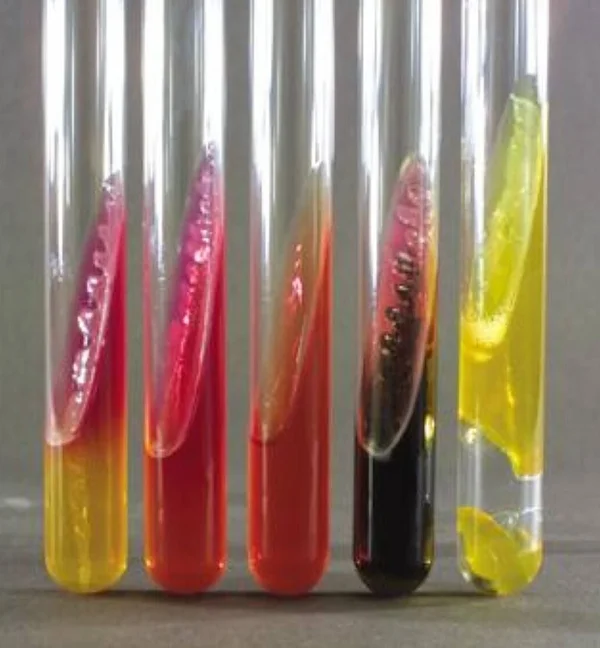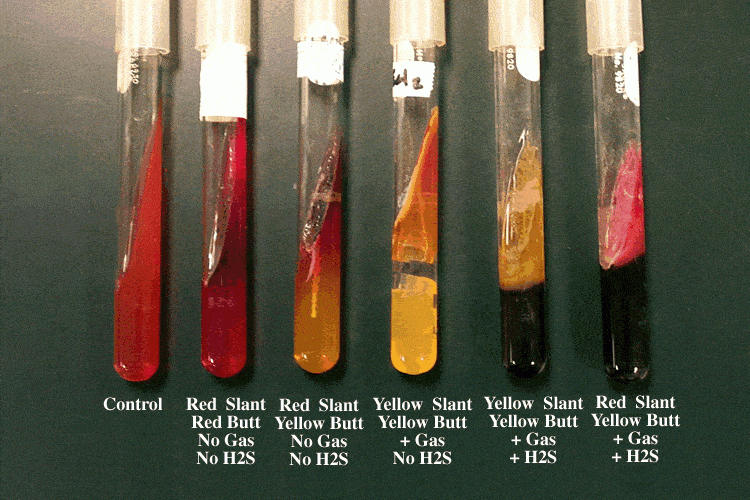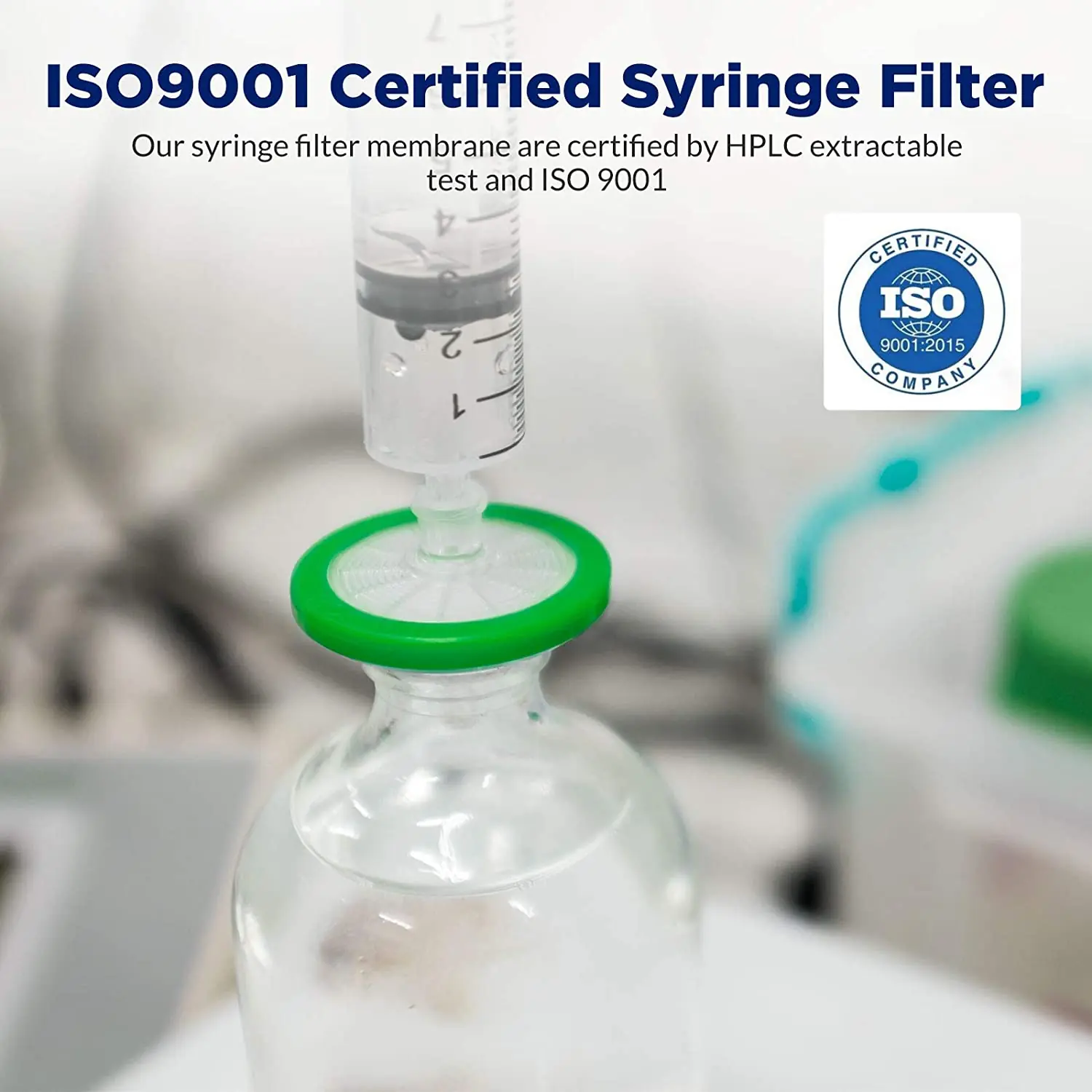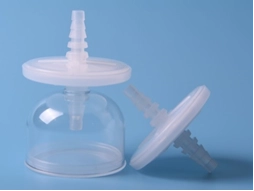Ⅰ. Overview
In 1940 Sulkin, Willett and Hajna described a triple-sugar ferrous sulfate medium for the identification of enteric bacilli
Triple Sugar Iron Agar is used for the presumptive identification of Enterobacteriaceae based on the fermentation
of glucose, lactose, sucrose and the production of gas and H2S.
Triple Sugar Iron Agar contains three carbohydrates (glucose, lactose and sucrose)
Ⅱ. Principle
When one of the carbohydrates is fermented, the lowering of the pH will cause the medium to change from reddish orange (the original color) to yellow. A dark red color indicates alkalinization of the peptones.
Sodium thiosulfate in the medium is reduced by some bacteria to hydrogen sulfide (H 2S), the latter reacts with ferric ions in the medium to produce iron sulfide, a black insoluble precipitate.
Ⅲ. TSI medium composition
Triple Sugar Iron Agar contains three carbohydrates: glucose (0.1%), sucrose (1%) and lactose (1%) + (beef extract, yeast, and peptones ...) + phenol red as an indicator of pH. During preparation, the tubes containing molten agar are tilted. This inclination makes it possible to have an aerobic metabolism in the slope and anaerobic in the pellet.
☰ For 1 liter of medium :
- Autolytic yeast extract ........3,0 g
- Meat extract ....................3,0 g
- Peptone ..............................20,0 g
- Sodium chloride ...................5,0 g
- Lactose ..............................10,0 g
- Sucrose ...........................10,0 g
- Glucose ..............................1,0 g
- Sodium thiosulphate................0,3 g
- Iron (III) citrate .................0,3 g
- Phenol red ..................... 24,0 mg
- Bacteriological agar ............9,0 g
Ⅳ. Interpretation of TSI agar
❶ If the bacteria only use glucose: the bottom turns yellow and the slope red
☰ Explanation :
The bacterium rapidly metabolizes glucose, initially giving an acid slope and an acid bottom (acid on acid A / A)
with production of pyruvate, After a further incubation (18 hours),
the glucose will be consumed, and like the bacteria cannot use lactose and sucrose,
peptones (amino acids) will be used as an aerobic energy source (slope) which causes the release of ammonia (NH 3)
increasing the pH, turning the indicator off of pH, phenol red, from yellow to red (alkaline over acid k / A).
❷ If the bacteria use glucose, sucrose and / or lactose: the bottom and the slope will turn yellow
☰ Explanation : After consumption of glucose, the bacterium continues to consume sucrose and / or lactose giving a yellow slope and a yellow bottom (acid on acid (A / A)). NB: If the medium is incubated longer, more than 48 hours, the lactose and sucrose will be depleted, and will return to an alkaline pH due to peptone metabolism.
❸ bacteria does not use any of the sugars:
In this case the bacteria will consume the peptones
☰ With 2 cases :
- If the bacteria can metabolize peptones both aerobically and anaerobically, the slope and pellet will be red (alkaline on alkaline; K / K) - If peptones can only be metabolized aerobically, the slope will be red and the base will not show any change (K / NC)
❹ Gas production
☰ The production of gas (CO2 and O2) is detected by the division (detachment) of the agar
❺ H2s production
☰ The black precipitate indicates that the bacteria were able to produce hydrogen sulfide (H 2S) from sodium thiosulfate. As H 2S is colorless, ferric ammonium citrate is used as an indicator of insoluble ferrous sulfide formation.
☰ The formation of H 2S requires an acidic environment; this means that even if the color of the pellet cannot be seen because of the darkening of the medium, the bacterium is glucose (+) because if there was no consumption of glucose and acidification of the medium the formation of H2S could not take place.
Triple Sugar Iron results
| A/A , G |
A/A, G, H2S+ |
ALK/A |
ALK/A, G |
ALK/A, G, H2S+ |
ALK/A, H2S(w) |
Citrobacter spp.
Cronobacter
Enterobacter
Escherichia
coli
Klebsiella spp.
Pantoea
Yersinia spp. |
Citrobacter spp.
Proteus vulgaris |
Escherichia coli
Morganella
Proteus penneri
Providencia spp.
Serratia spp.
Shigella spp.
Yersinia spp. |
Escherichia coli
Citrobacter spp.
Enterobacter spp.
Hafnia
Klebsiella spp.
Proteus
myxofaciens
Providencia
alcalifaciens
Salmonella enterica
serovar
Paratyphi
Serratia spp.
Yersinia kristensenii |
Citrobacter spp.
Edwardsiella tarda
Proteus mirabilis
Salmonella serovars
other than
S. enterica serovar
Typhi and Paratyphi |
Salmonella
enterica
serotype Typhi |
A, acid; ALK, alkaline; G, gas; +, positive; w, weak.




